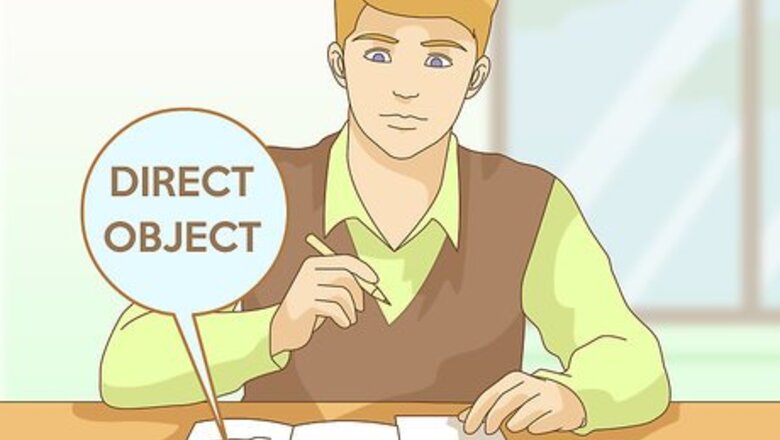
views
Identifying the Direct Object
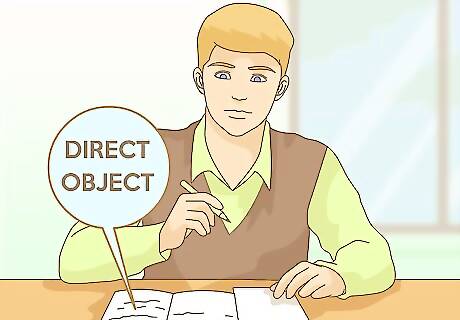
Consider the purpose of the direct object. A direct object could be a noun or a pronoun, and always follows an action verb. An action verb is a verb that requires something or someone to receive that action. Without a direct object, a sentence that contains an action verb may not make any sense. For example, consider the sentence, “Dennis and Johanna ate omelettes for breakfast.” If you were to remove the direct object from the sentence, the verb’s action no longer makes much sense (“Dennis and Johanna ate for breakfast.”) The direct object gives us information about the action that was performed by telling us for whom or for what the action was performed. In the example of Dennis and Johanna, the eating was performed for the omelettes.
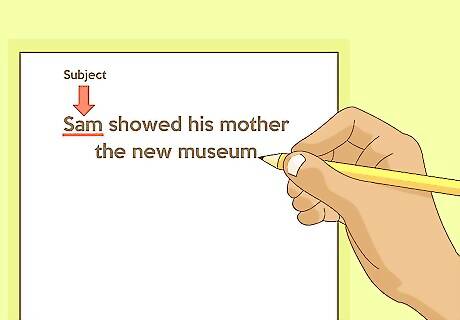
Find the subject of the sentence. The subject of the sentence is the person/thing doing something in a sentence. You can determine this by asking yourself “who” or “what” is performing the action in a sentence. For example, “Sam showed his mother the new museum.” Who performed an action in this sentence? Sam did. What did he do? He showed his mother the new museum. In this example, the direct object is “the new museum.” If you ask yourself, “What or whom was shown?” You can see that the museum is what was shown, and is the direct object.
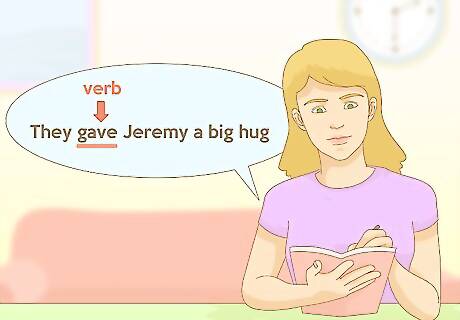
Look for the direct object in sentences with “transitive” action verbs. If a sentence contains an action verb (cook, hug, show) there is a greater chance that a direct object will exist to receive the action of that verb. Action verbs that require a direct object are often called “transitive verbs”, while action verbs that don’t require a direct object are often referred to as “intransitive verbs.” An example of a transitive action verb: “They gave Jeremy the money.” In this sentence, the verb is “gave.” Ask yourself what the subject ("they") did. The subject “gave.” This is a transitive verb. You can tell it's transitive, because if you left the sentence at “they gave Jeremy,” the sentence would no longer make sense. This verb needs a direct object. In this case, the direct object is "money," because the money is what was given. ("Jeremy" is the indirect object, to whom the money was given.)
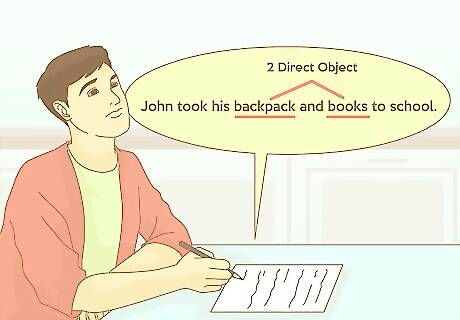
Keep in mind that there can be more than one direct object. In some cases, a sentence may have more than one direct object, or the direct object may be a clause. Clauses can be particularly misleading, so think carefully about who or what is receiving the action of the verb. For example, “John took his backpack and books to school.” In this case, both “backpack” and “books” are direct objects. An example of a direct object clause exists in this sentence: “John loves baking cakes.” In this case, the action verb is “loves,” and the direct object is “baking cakes.” If you ask yourself, “what does John love?”, you will see that the answer is, “baking cakes.”

Recognize that some sentences will not have a direct object. Not all sentences will contain a direct object. For example, if the sentence contains a “linking” verb (e.g. am, is, are), “state of being” verb (seem, remain, feel), or an intransitive action verb (e.g. sneezed, danced, cried) , then it may not contain a direct object. An example of a linking verb is included in the following sentence: “They are stubborn children.” The linking verb here (“are”) links the subject (the children) with the adjective (“stubborn”). An example of a state of being verb: “Sarah felt ill.” In this sentence, the verb “feels” simply explains the state of the subject (Sarah). An example of an intransitive action verb: “Hannah sneezed repeatedly.” The verb here is, “sneezed”, but if you ask yourself, “Who or what did Hannah sneeze?” You will find that there is no answer in the sentence which explains that.
Checking Your Work

Ask yourself “whom” or “what” is receiving the action. Try to remember that the direct object in a sentence is always a thing or a person who received the action of the verb. For example, in the sentence, “Alice baked her mother a cake.” You can quickly identify the subject who performed the verb (Alice) and the verb (baked). Now ask yourself, “What or whom was baked?” Was her mother baked? No, that’s not what the sentence says. The sentence says that she baked a cake. What was baked? A cake! You have now identified the direct object.
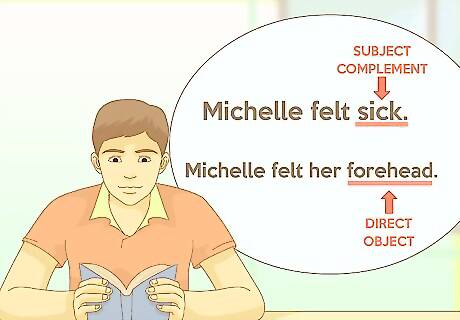
Avoid mistaking the direct object for a subject complement. A subject complement is a clause that follows the action verb, and describes the subject. It can be easy to confuse these because subject complements can only follow a linking verb, but some linking verbs can also be used as action verbs. For example, “appear”, “grow”, “remain”, “smell”, and “turn.” are all examples of linking verbs that can also be used as action verbs. In the sentence, “Michelle felt sick.” The verb, “felt” is a linking verb because it does not require any explanation of whom or what. However, in the sentence, “Michelle felt her forehead.” The verb, “felt” is an action verb because it requires an explanation of whom/what was felt, in this case, her forehead. If you were to remove this information, the sentence would not make sense.
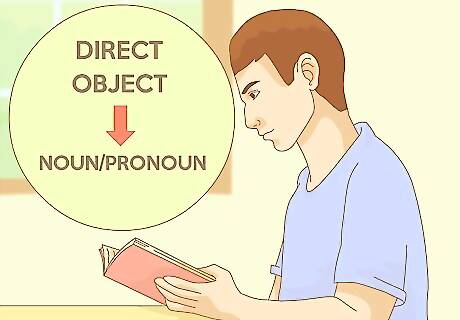
Remember that direct objects are always nouns or pronouns. If you are trying to identify the direct object in a sentence, it can be helpful to remember that the direct object will either be a noun or it will be a pronoun. If the word you have identified as the direct object is a verb, adjective, or an adverb, try reading the sentence again. Ask yourself again, “To whom or what was the action done?” Hopefully, asking yourself this, and look carefully for a noun or pronoun will help you identify the direct object.
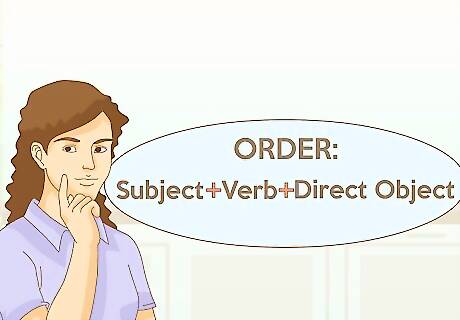
Keep word order in mind. The direct object will always come after the verb in a sentence, so it can be helpful to identify the verb first. This way, you will know that the word you are looking for will be after the verb. Keep in mind, though, that if you are trying to identify a direct object in a foreign language, such as German, this may not always be the case as word order can vary dramatically among languages.



















Comments
0 comment